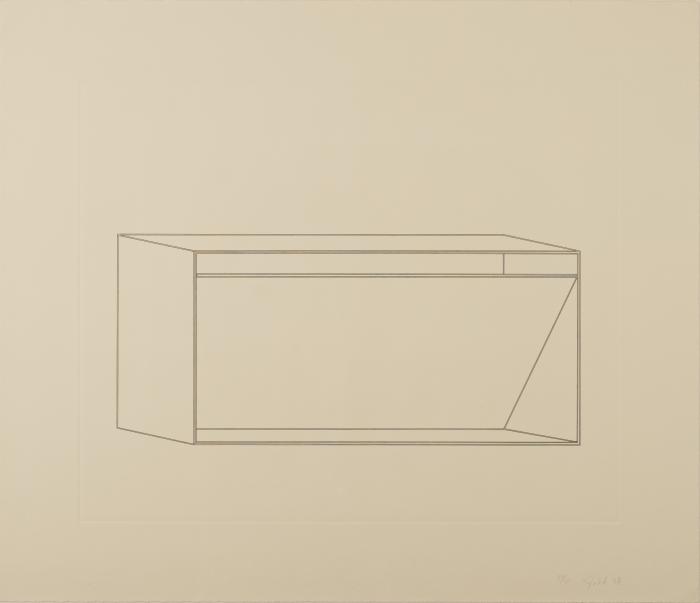Donald Judd
Untitled (Suite of 16 Etchings) , 1978
Artwork Type: Prints
Medium: Etching on paper
Dimensions: 30 x 35 in. (76.2 x 88.9 cm)
Accession #: 19810749
Credit: Collection of University Art Museum, University at Albany, State University of New York on behalf of The University at Albany Foundation, gift of Martin Shafiroff
Related Exhibition:
Affinities and Outliers: Highlights from the University at Albany Fine Art Collections
Copyright: © Donald Judd
Object Label:
Show Object Label(s)Donald Judd was one of the leaders of Minimalism, a style that emerged in New York in the
1960s characterized by serial repetition of primary geometric forms, industrial materials, and
an attunement to sculpture’s interaction with the gallery space. In contrast to the subjective
mark-making of the Abstract Expressionist artists of the previous two decades, Minimalists
removed any traces of the artist’s hand and often had their works fabricated in factories.
Judd’s sixteen untitled etchings read as schematic drawings for his sculptures. In fact, the
one-hundred mill aluminum boxes installed at the artist’s foundation in Marfa, Texas share a
similar design with the boxes in these prints. The repetition of the same primary box
structure with changing interior planes calls for viewers to slow down and become sensitive
to the specific relationships that emerge in each iteration.
Drawn in isometric perspective, receding parallel lines remain parallel in these etchings,
rather than converge, as in one-point perspective. While other artists in this exhibition
(notably Josef Albers, Luis Molinari-Flores, and Shozo Nagano) employ this perspectival
system to create optical illusions, Judd does so to distance his work from a fine art tradition
and ally his art instead with architectural and engineering plans, in which isometric drawings
are commonly used.
–When We Were Young: Rethinking Abstraction From The University At Albany Art Collections (1967-Present)
Donald Judd (1928–1994, American)
was a leading figure in the art historical
movement that has been characterized
as Minimalism. The style emerged in
New York in the 1960s and insisted on
sculpture’s interaction with the exhibition
space as well as the viewer. Artists
who worked in this style utilized mass-
produced forms and the process of
repetition. Judd’s sixteen untitled etchings
rely on repetition of the same primary
box structure with varied configurations
of interior planes. Exhibited in its
entirety, the artist intended for the suite
to be arranged horizontally or vertically
and invites the viewer to consider
new relationships that emerge with
each iteration.
–Affinities and Outliers: Highlights from the University at Albany Fine Art Collections
Please contact us at dabbatiello@albany.edu to verify collection holdings and artwork information. If you are interested in receiving a high resolution image of an artwork for educational, scholarly, or publication purposes, please contact us at dabbatiello@albany.edu.
